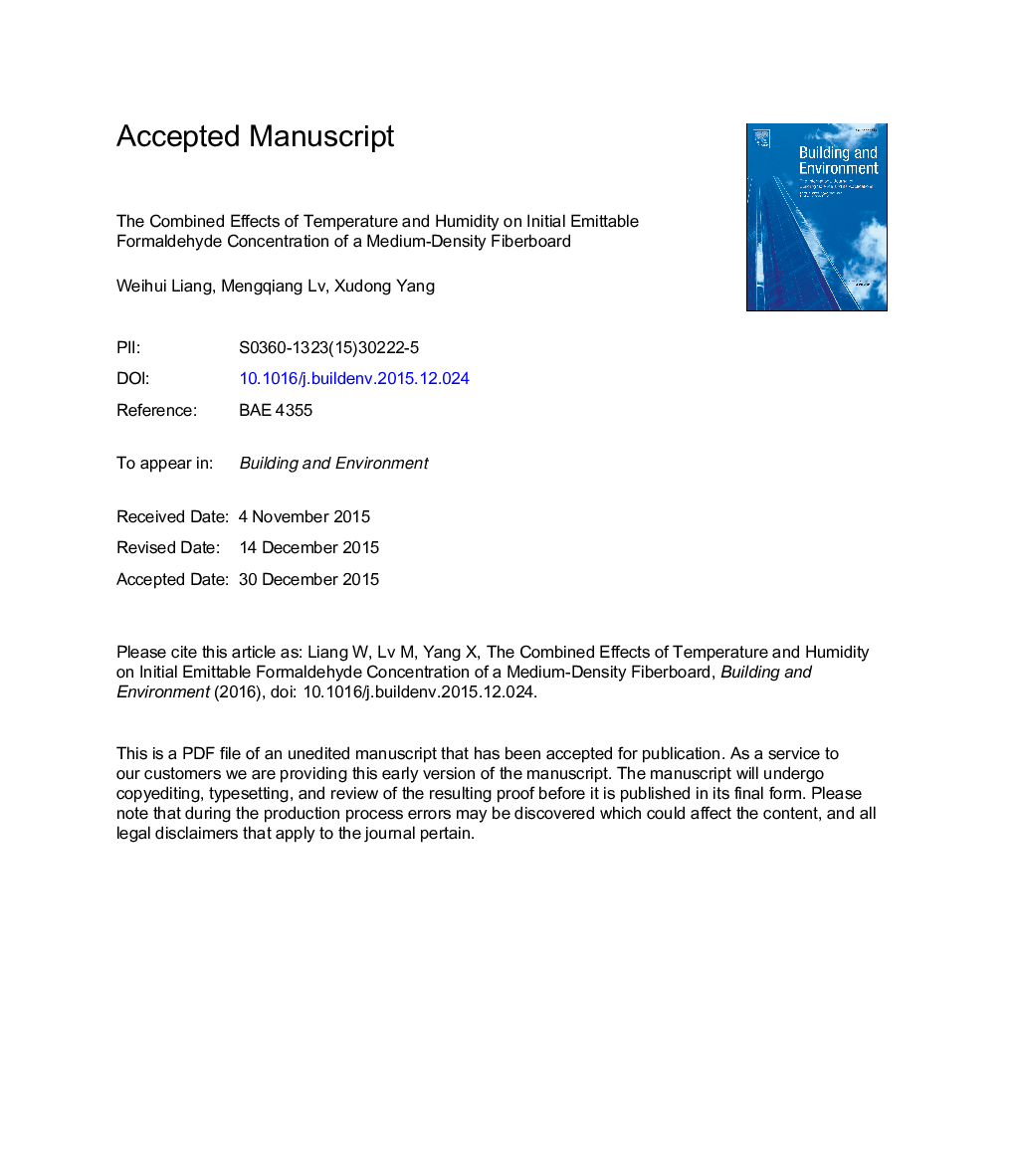| Article ID | Journal | Published Year | Pages | File Type |
|---|---|---|---|---|
| 6699526 | Building and Environment | 2016 | 35 Pages |
Abstract
Individual effects of temperature and humidity on formaldehyde emissions from manufactured fiberboards have been studied previously, but their combined effects and possible correlation with initial emittable concentration (C0) of building materials have not been reported yet. This paper investigated their combined effects on C0 theoretically from microcosmic perspective. Total formaldehyde content related to humidity and formaldehyde molecular phases affected by temperature in the porous material were considered. A correlation between C0 and the combined effects of temperature and humidity was derived. A typical medium-density fiberboard (MDF) was tested over the temperature range of 5.2-35.0 °C, absolute humidity (AH) range of 2.8-17.8 g/kgair in the dynamic environmental chamber to validate this correlation. The good agreement between the correlation and measurement data demonstrated the effectiveness of this correlation. The correlation could be helpful to simulate formaldehyde emissions and to estimate indoor formaldehyde exposure under varied temperature and humidity conditions in actual buildings. Influences of using different token parameters of humidity (absolute humidity vs. relative humidity) were also analyzed. The token parameter of humidity has significant effects on the quantitative conclusions on the influencing factors studies.
Related Topics
Physical Sciences and Engineering
Energy
Renewable Energy, Sustainability and the Environment
Authors
Weihui Liang, Mengqiang Lv, Xudong Yang,
